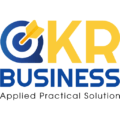The modern business world is fast-paced and ever-changing. Leaders today face diverse challenges that require timely strategic decisions and actions to navigate and steer their organizations forward. In this article, OKR.BUSINESS introduces the ASA framework (Assess – Strategize – Adapt), developed from real-world insights and inspired by the Harvard Business School (HBS) Case Method.
ASA is a powerful strategic tool designed to help planners, managers, and anyone with a passion for business confidently confront complex situations in today’s economic landscape. The ASA framework focuses on systematizing approaches, analysis, and identifying core aspects of the issue at hand, providing a foundation for creating actionable strategies with high feasibility and adaptability to evolving conditions.
ASA – The Three Essential Stages for Strategic Analysis
A (Assess) – Assess with Precision:
Great success always begins with focused, thorough, and multidimensional analysis. Leaders must pinpoint the core issue, prioritize the most relevant data and arguments, while maintaining objective assessments within the larger business context. In this stage, ASA helps prioritize and distill crucial details from the overwhelming amount of information, ensuring clarity in overall strategic planning, and an understanding of the real drivers of success.

Selecting the right information needed for the objective plays a very important role.
Key Analytical Aspects:
- Define the Problem: Use the Problem-Definition Process to clarify challenges, barriers, or associated risks.
- Gather Information: Apply the PESTELE framework to study the market, financial data, and stakeholder input, especially focusing on macro factors.
- Analyze the Context: Assess the business environment, competition, and regulations using the CAGE Distance Framework.
- Identify Stakeholders: Understand the influence and balance of key players with Stakeholder Mapping.
- Challenge Assumptions: Use the Devil’s Advocate Method to explore multidimensional perspectives, respect relevant ideas, and identify biases that may distort the analysis.
03 getting-started questions:
- What is the core problem or opportunity we are addressing, and how does it align with our overall business objectives?
- What data or external factors (market trends, competition, regulations) must we consider to fully understand the business context?
- Who are the key stakeholders involved, and how do their interests and influence impact our decision-making process?
S (Strategize) – Strategize with Purpose:
Developing a comprehensive strategy requires a rigorous evaluation of alternatives, backed by reliable, tested data. In this phase, leaders need to consider multiple solutions from diverse angles, assess the risks and benefits, and ultimately choose the most suitable strategy that aligns with the organization’s overall goals and resources. The ASA framework goes beyond planning; it’s about creating executable, real-world solutions.

An effective master strategy is based on multidimensional analysis, considering the benefits and risks as well as optimizing and utilizing all possible resources.
Key Strategic Aspects:
- Generate Alternatives: Use SWOT Analysis to identify alternatives, opportunities, and threats.
- Evaluate Options: Apply Cost-Benefit Analysis to weigh the risks and benefits of each choice.
- Select the Best Strategy: Use Porter’s Five Forces or Eisenhower Matrix to identify the optimal strategic option.
- Apply Analytical Frameworks: Use BCG Matrix or Ansoff Matrix to analyze growth or market options.
- Develop an Action Plan: Implement with Gantt Charts for detailed planning, linking responsibilities to timelines.
03 getting-started questions:
- What are the most feasible alternatives, and how do they align with the company’s resources and goals?
- What are the potential risks and benefits of each option, and how can we mitigate risks while maximizing benefits?
- Which frameworks (SWOT, Porter’s Five Forces) can be used to ensure a well-rounded analysis of our strategy?
A (Adapt) – Adapt with Agility:
The business environment is always changing, and quick adaptability is essential for long-term success. In this phase, according to the ASA framework, leaders execute their strategies with focus and efficiency, while remaining ready to adjust based on real-time feedback. This process includes monitoring progress, gathering feedback, and continuously making timely adjustments to ensure sustainable success.

Be flexible and ready to change according to the actual situation of the business environment.
Key Adaptive Aspects:
- Implement Strategy: Use Lean Methodology to execute effectively and optimize resources.
- Monitor Progress: Apply Balanced Scorecard or KPIs to define and track key performance indicators.
- Gather Feedback: Utilize 360-Degree Feedback to gain multi-dimensional insights from stakeholders.
- Remain Flexible: Apply Scenario Planning to predict and adapt to market changes.
- Continuous Improvement: Operate using Kaizen or Agile Methodology to drive ongoing improvement and quick adaptation.
03 getting-started questions:
- How will we monitor progress, and what key performance indicators (KPIs) will measure success?
- How will we gather and incorporate feedback from stakeholders to refine and adjust the strategy as needed?
- How will we ensure continuous improvement and remain adaptable to changes in the business environment?

ASA – A strategic compass developed and introduced by OKR.BUSINESS
In a constantly evolving world, the ability to adapt and learn from real-world experiences is key to business survival and growth. ASA is not just a tool for analysis, but a source of inspiration for fostering creativity, ensuring alignment with long-term goals, and building adaptability in the face of constant change.
By flexibly applying these core principles, the ASA framework becomes a strategic compass and invaluable tool for guiding managers and leaders through decision-making, sharpening critical skills, and developing core competencies essential to leading successful businesses in real-world operations.




